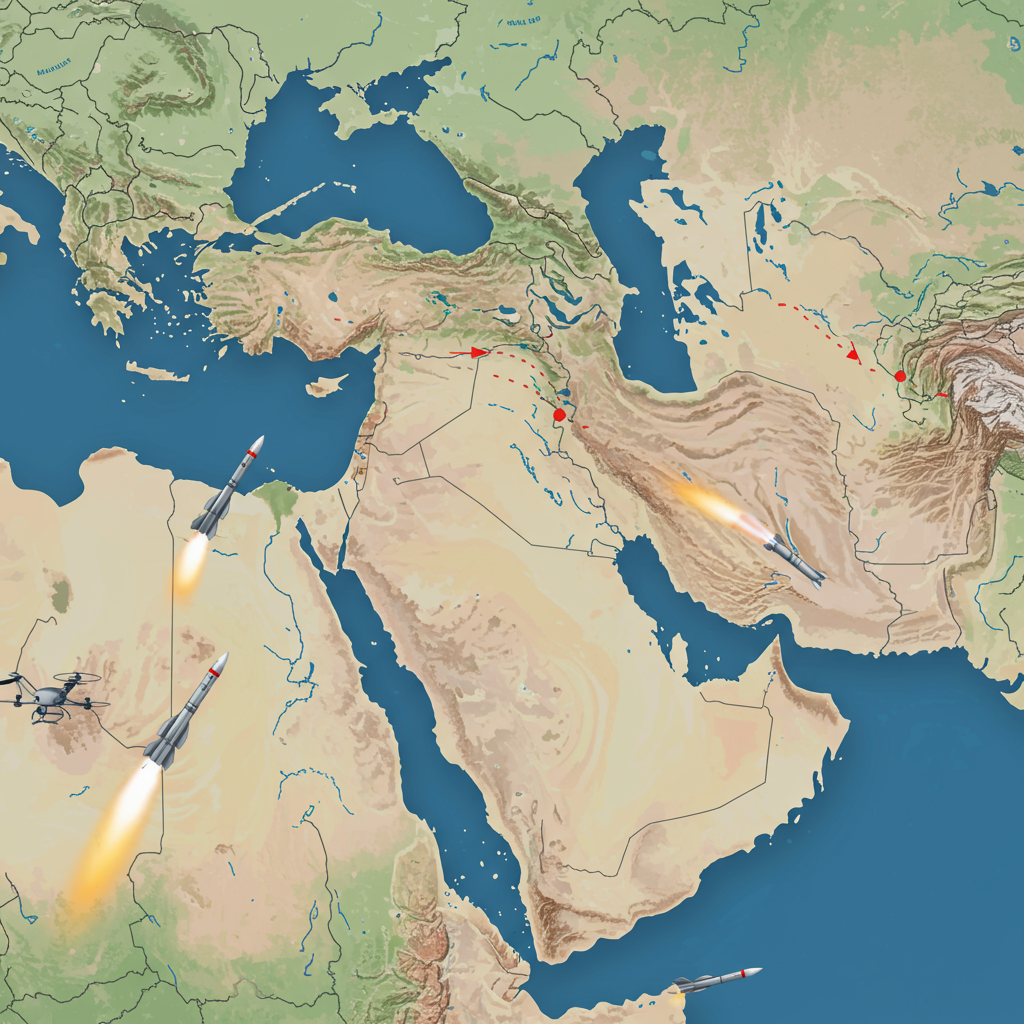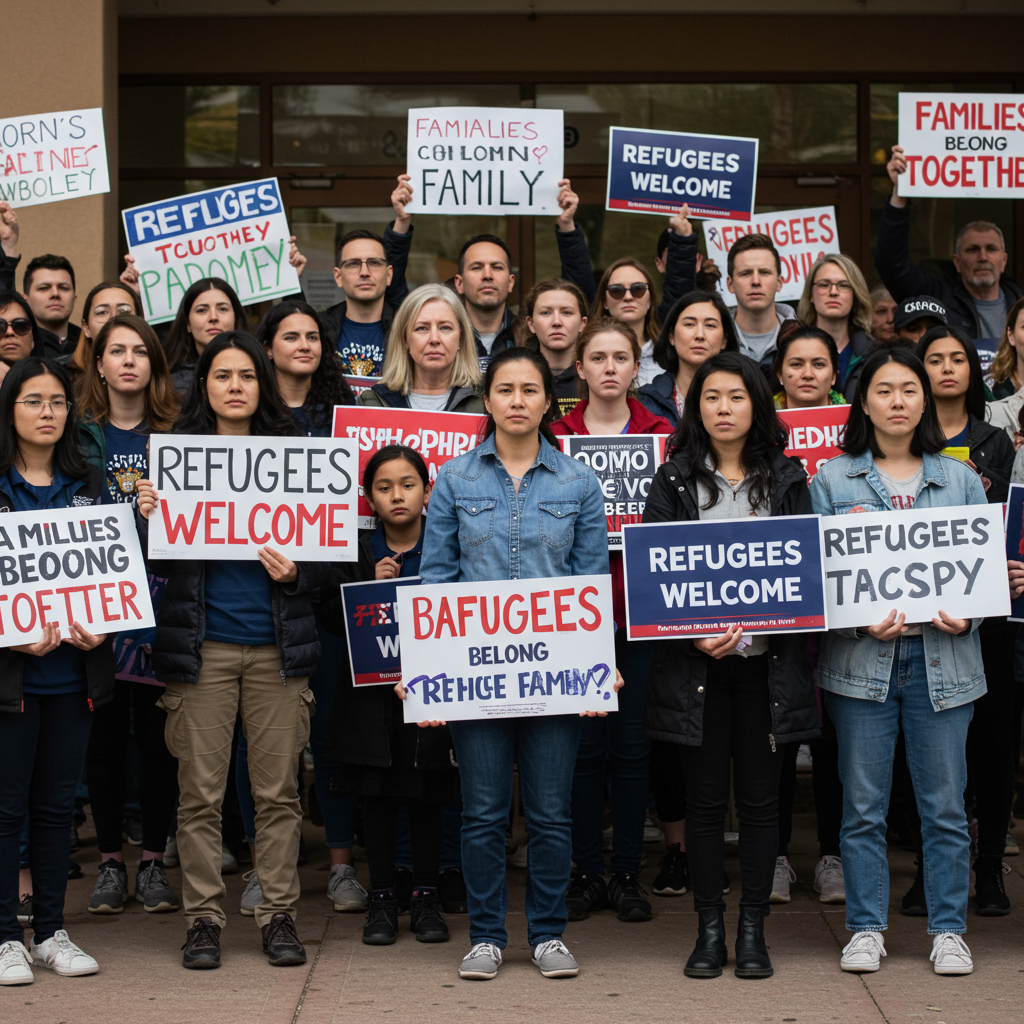The intense confrontation between Iran and Israel is fundamentally altering the strategic landscape across the Middle East. For years, analysts widely perceived a precarious “balance of terror,” where Israel’s conventional military superiority was offset by Iran’s asymmetric capabilities, particularly its extensive missile and drone arsenal and its network of proxy groups across the region – often referred to as the “Axis of Resistance.”
This dynamic fostered an assumption that direct conflict would inflict unacceptable pain on both sides, creating a deterrent effect. Consequently, their rivalry largely played out in the “grey zone” or through hybrid warfare, a scenario that favored Iran by allowing it to leverage its unconventional strengths while preventing Israel from fully employing its advanced military.
The Post-October 7th Shift
The wave of violence ignited by Hamas’s attack on Israel on October 7, 2023, dramatically reshaped these assumptions. Iran and its regional allies have faced significant setbacks. While groups like Hamas and Hezbollah are not fully defeated, their capacity to effectively target Israel has been severely curtailed in subsequent conflicts. Iran’s only state ally, the Assad regime in Syria – a crucial platform for its influence in the Levant – also collapsed in December 2024. An exception to this trend has been the Houthi movement in Yemen, which has emerged as a more prominent regional actor, though geographically constrained in its ability to exert direct pressure on Israel.
Iran’s increasing vulnerability became starkly apparent during direct clashes with Israel in April and, more significantly, October 2024. In these confrontations, Israel successfully inflicted damage on Iranian military capabilities, nuclear sites, and air defenses, while Iran’s large-scale missile and drone launches caused only marginal damage in Israel. Tellingly, Iran initiated de-escalation in both instances, a move driven by its evident weakness rather than a desire for peace.
Iran Under Relentless Pressure
This trend has only deepened in the current round of violence. Israel continues to inflict significant damage on Iran’s nuclear program, military infrastructure, and increasingly, its energy facilities. Iran, in contrast, consistently struggles to cause substantial damage in Israel. Having achieved at least partial air superiority, the Israeli air force can now strike key nuclear, military, economic, and governmental targets within Iran with considerable freedom.
This escalating conflict is unfolding amidst sensitive stalled negotiations between Iran and the United States regarding Tehran’s nuclear ambitions. Reports indicate these high-stakes talks paused over the US demand that Iran cease all uranium enrichment, even for civilian purposes. This stance contrasts sharply with the 2015 JCPOA, which permitted limited enrichment.
Adding pressure, the International Atomic Energy Agency (IAEA) recently reported Iran had amassed around 400 kg of uranium enriched to 60% purity – a quantity analysts suggest could be sufficient for nine to ten nuclear weapons if further enriched. The day before recent Israeli strikes, the IAEA board declared Iran in breach of its non-proliferation obligations, a significant development after two decades.
From Tehran’s perspective, the nuclear program isn’t just about energy; it’s a critical piece of leverage. Iranian officials view US proposals not as pathways to peace but as a “blueprint for surrender,” fearing they could pave the way for regime change. Supreme Leader Ali Khamenei has declared uranium enrichment a “red line,” believing surrendering this right would embolden adversaries to demand further concessions, potentially leaving Iran defenseless. This intense pressure and the targeting of its most sensitive sites underline Iran’s strategic bind.
Few Viable Responses for Tehran
Given the mounting losses and Israel’s operational advantage, Iran’s options for a meaningful response are severely constrained. Tehran is acutely aware that being perceived as weak, especially by its own population during this vulnerable period, poses a significant threat to the Islamic Republic’s stability. Yet, Iranian leaders understand that Israel holds the upper hand in the current escalation ladder.
So, what can Iran do? Its potential responses are limited, and none appear capable of reversing its current trajectory of losses:
Relying on Proxies: Normally, pushing its non-state partners would be the primary response. However, Hamas is severely weakened, Hezbollah is reportedly wounded and focused internally, and even the Houthis, despite their prominence, are constrained by geography and Israel’s advanced defenses.
Targeting US Assets: Iran could strike American military bases in the region. However, this is an extremely risky gamble. It would almost certainly provoke direct US military intervention, potentially targeting Iran’s deeply buried nuclear facilities like Fordo. US officials have reportedly approved plans for strikes on nuclear sites using bunker-buster bombs and are waiting to see if Iran becomes willing to negotiate on its nuclear program. While Washington might strike anyway, Tehran clearly wants to avoid triggering this through its own actions, which would exacerbate its vulnerability.
Blocking the Strait of Hormuz: Closing the strait, a vital chokepoint for global oil transit, is a drastic measure. It would likely trigger a US military response, anger Gulf states (some of whom have been critical of Israel), strain relations with key partners like China, and devastatingly cripple Iran’s own oil exports and fragile economy. This remains a last-resort option.
Cyber Attacks: Iran has developed strong cyber capabilities and could target critical infrastructure. However, inflicting significant damage (e.g., on water systems) would be difficult to deny and would likely invite powerful, disproportionate counter-responses in both the cyber and physical realms. This, too, presents a no-win scenario with potential costs outweighing benefits.
The Human Cost and Uncertain Future
Adding to the complexity, the conflict is having a devastating impact on Iranian civilians, particularly in Tehran. Reports describe empty streets, closed businesses, and patchy communication under intense bombardment. With inadequate public shelters, many residents spend nights huddled in metro stations. Casualties are significant, with hundreds reported killed and over a thousand wounded. State media has reportedly ceased coverage, leaving the population uninformed and isolated. The lack of clear official guidance and reliable air raid sirens has left many feeling exposed and abandoned, trapped in high-rise buildings ill-equipped for such attacks. The difficulty of fleeing, due to gridlock and lack of resources, compounds the humanitarian crisis.
Amidst the physical danger, a complex internal sentiment exists. Some Iranians, while opposing the current regime, are wary of Israel being the force to determine Iran’s future, preferring change to come from within.
Ultimately, Iran’s leadership faces a difficult path with no easy exit. They are sustaining significant damage and have limited effective retaliatory options. While they aim to inflict enough costs on Israel to force a cessation of hostilities, their capacity to sustain this struggle is unclear. Trapped between the need to project strength domestically and the harsh reality of their strategic constraints against a militarily superior foe potentially backed by the US, Tehran finds itself in a profoundly difficult position with diminishing options for a favorable outcome.



